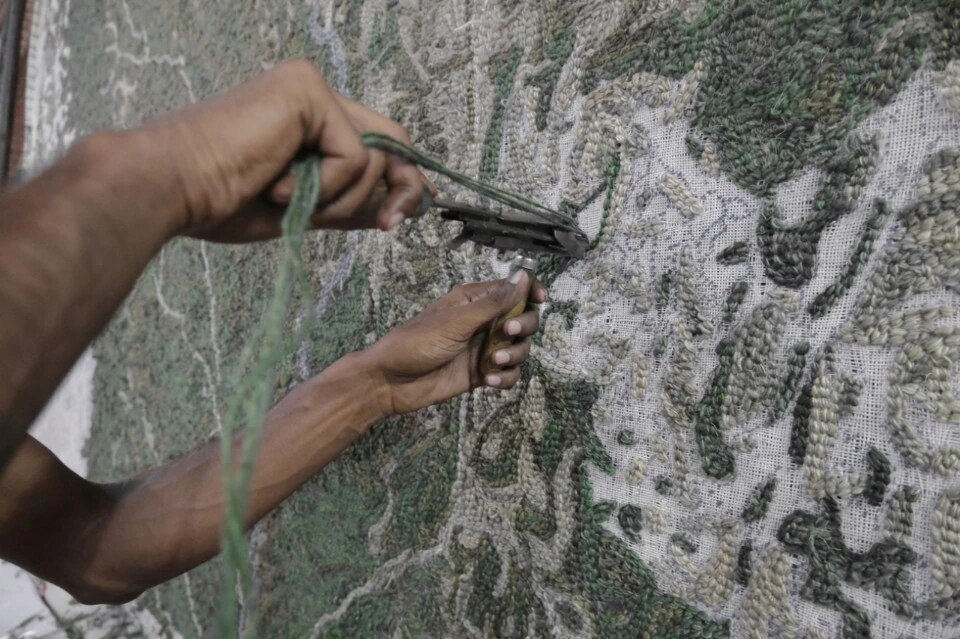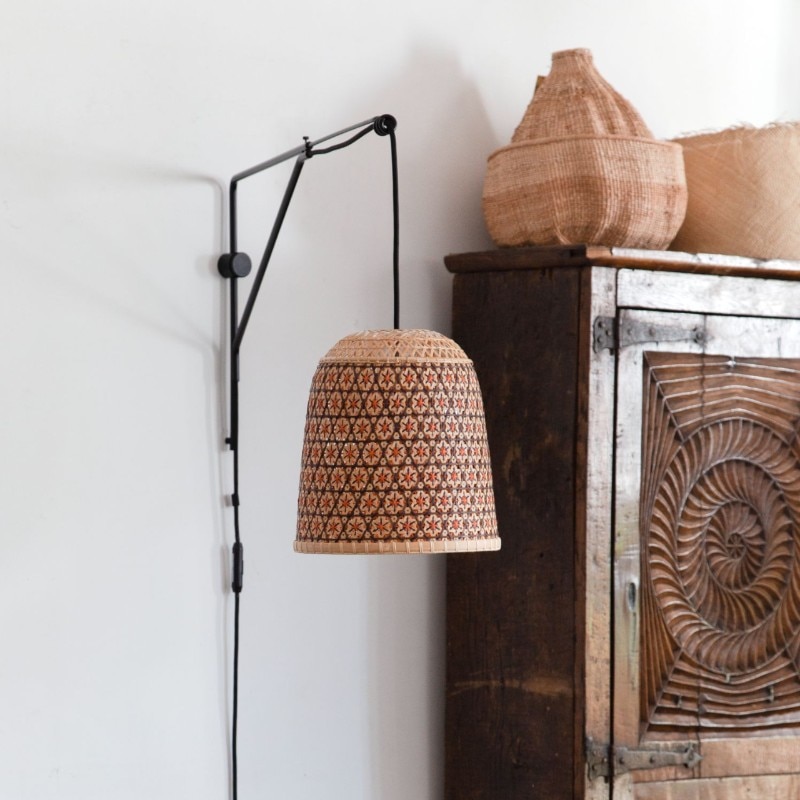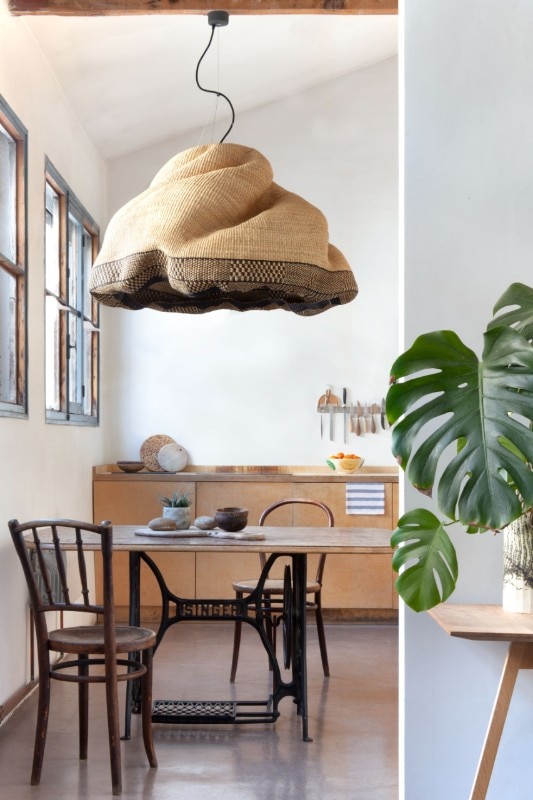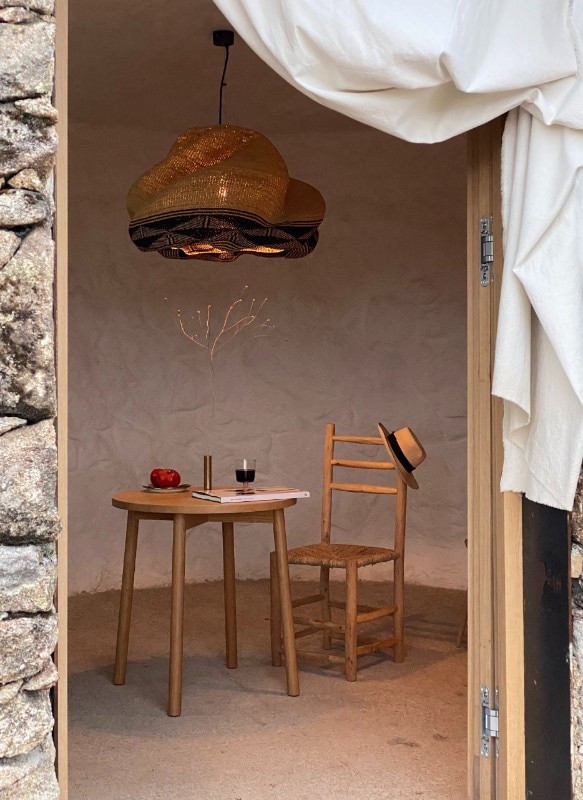The Spanish designer who launched PET lamps ten years ago (the social design project based on the reuse of plastic bottles through the intervention of weavers) and who has exhibited his rug made of recycled PET plastic, Plastic River No.6 Ganges, to the Salone 2021, claims that recycling is not the solution. This seems to be in conflict with his work. We are standing in front of his gigantic rug, hanging on the wall of a cloister at the National Museum of Science and Technology Leonardo da Vinci, which is the stage of RoGuiltless Plastic, the international exhibition conceived by Rossana Orlandi, with her daughter Nicoletta Orlandi Brugnoni, to involve the world of design in a creativity that speaks of sustainability and whose motto is “Save the waste. Waste is value”. All around us there are spaces created by international architectural firms using recycled or recyclable materials and new technologies, projects and technological research generated by re-waste to give life to a responsible circular economy. Given this firm assumption by the Spanish designer, the question arises as to whether all these creatives and institutions are working in an incorrect or, at least, inefficient direction. In reality, the question that Álvaro Catalán de Ocón puts at the centre of his idea only starts with product design and ranges over productive and social systems and logics. There is no simple or unequivocal answer, but Plastic Rivers has the elements to get to the heart of the matter.
This new project of yours still focuses on PET plastic, the involvement of artisans and a denunciation, but there are many differences between the two: formal, process and also communicative scope.
Plastic Rivers was born in 2018 after meeting Mapi Millet, creative director of GAN rugs (Gandia Blasco Group), at a conference and exhibition on sustainable design. We talked about the possibility of creating a collection of recycled PET plastic rugs, a material they were experimenting with and which I had worked with for years in my PET lamps. Here it was about approaching the use of PET not as reuse, as I had done with the lamps, but as recycling. They sent me a sample of yarn. It was soft to the touch, it felt like wool, it had no personality, i.e., it did not betray its origin, whereas I was interested in leaving a trace. In fact, my rug is a concrete demonstration of what happens with plastic waste.
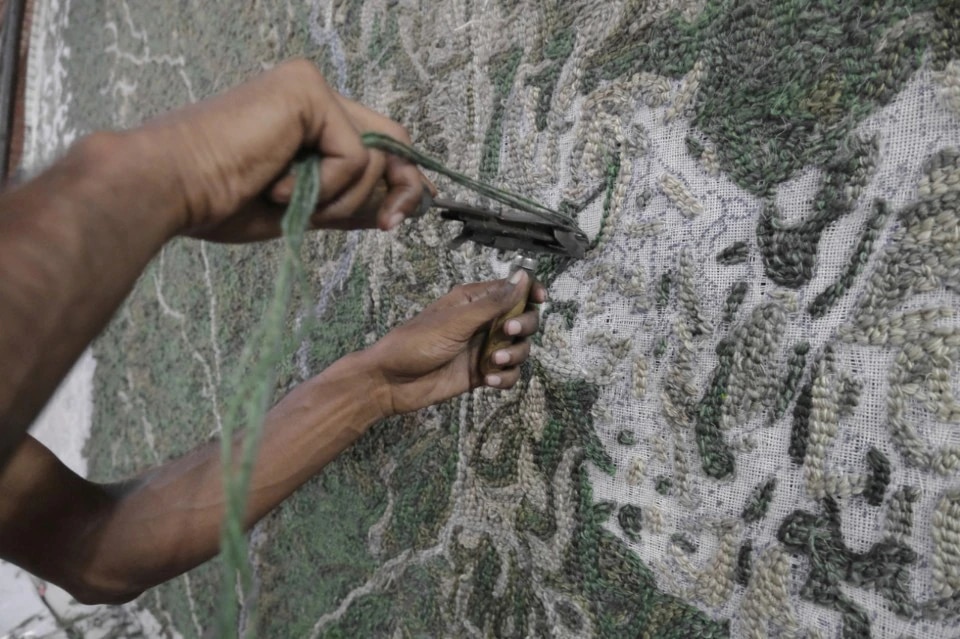
The rug is, in fact, a very detailed map, as will be the other three in the series that will be presented at the next Salone del Mobile in April 2022. What were the main difficulties in making it?
All the rugs in the series reproduce a map taken from Google Earth, photographing an area of 100 square kilometres. I was inspired by Alighiero Boetti and his work with Afghan women: he asked me to make a map of the world by cutting out the flag of each country. The colour rendering was the biggest challenge. We worked hard to ensure that the colours were faithful to the RGB colours seen on the screen, which we translated into a CMYK print and then into the colour tone of the fabric, in this case recycled PET yarn. All these steps risk losing fidelity to the original. For me, having worked with the natural colour of the yarn for PET lamps, it was all new. We created a large pattern that defined the different colours in minute details, so that the Indian craftsmen of GAN rugs followed it with extreme precision, stitch by stitch, pixel by pixel. Three different heights were used to mark the different areas: one for the Himalayas, one for the lower elevations, and the third for the Ganges with its branches and lakes. The yarn is made from bottles collected in the area of the river that is represented. The rugs are hand tufted, knotless and are 100 per cent recyclable at the end of their life. The material also makes them suitable for outdoor use.
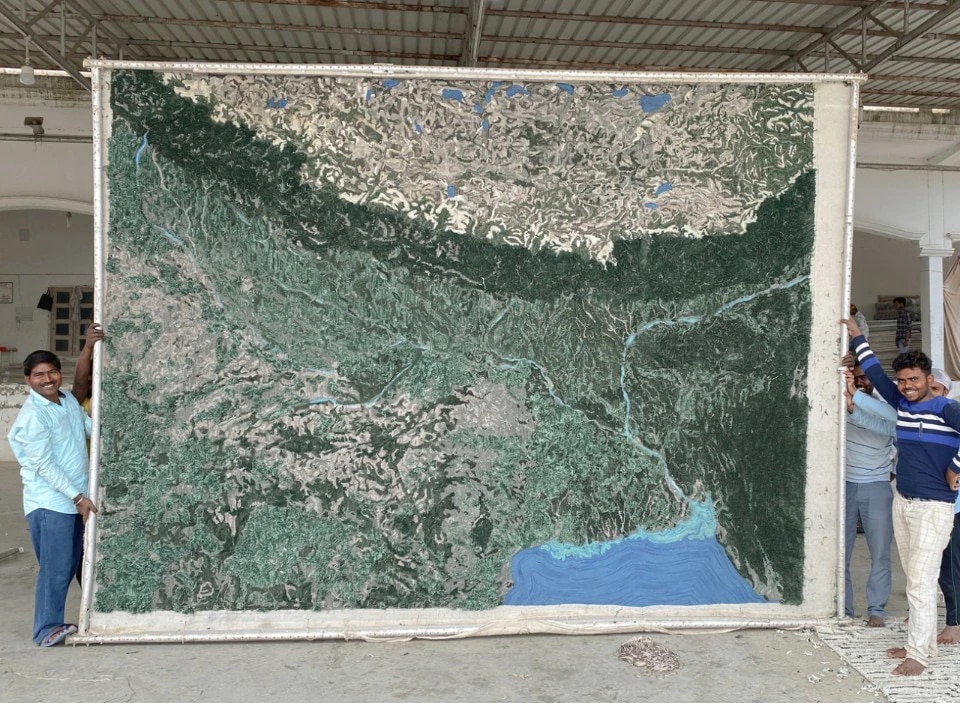
The river, in this case the Ganges, is at the centre of the visual representation on the rug. What role does it play in your denunciation?
According to the latest studies published in the journal Science Advances, 80 per cent of the plastic found in the oceans reaches us via rivers and coastlines. The Ganges is among the most polluted rivers in the world: in 2019 it contained 200 tonnes of plastic, which is why we chose it. Much of its condition stems from the fact that it is the trade route for waste between rich and poor countries. Since the latter do not have a sufficiently strong environmental legislative system, they buy our rubbish, sort out what they are interested in recycling and throw the rest away. Most of the leftovers end up in nearby rivers which, as huge highways, carry the waste into the oceans, where no one takes responsibility. As long as there is no environmental awareness in these countries, things will not change. Just think of the effect of China’s ban on waste imports at the end of 2017: the most contaminated rivers are in Malaysia, Vietnam, Thailand and the Philippines.
In Europe there is an atmosphere of romantic recycling, which hides a very cynical policy. Now people are thinking about changing the laws on single-use plastic products because it is harder to get other countries to solve our problems. Thanks to PET lamps we have, in ten years, reused 25,000 bottles: nothing compared to the numbers of plastic pollution, but the project has been known by millions of people, it has raised awareness. With Plastic Rivers, we are helping to remove a number of bottles from landfills, but above all we want to raise awareness and generate an individual social movement around the problem of plastic waste. The ecological and moral issues related to these rugs are expressed on the label stitched on the back, which also features a map, river characteristics and product details.
In Europe there is an atmosphere of romantic recycling, which hides a very cynical policy.
If the solution is not in recycling, where is it?
Recycling is only one part of a solution that is urgently needed. What bothers me the most is that it has been promoted as the environmental answer to the exponential increase in waste. It has produced an industry that is globally worth 200 billion dollars. The right direction to take is to try to be responsible users of the resources at our disposal and find solutions for the future. Acting from the roots, socially and politically.
Any positive notes?
I think companies are starting to be brave again, to invest in research. They have not done that for a long time, they were working on the safe side. That is why in the last 10-15 years the best designers stopped working for companies, they started doing research on their own. They were annoyed by the overproduction of identical and useless products. However, I believe that every product has a shadow, which can be defeated by leaving a message, like my rug-manifesto. In art, but also in music, there have always been protest movements – think of Nina Simone or Bob Dylan. In design, it is more difficult – imagine a chair or a table that expresses dissent – but you have to try to push the boundaries of an object. I think this movement is starting.


